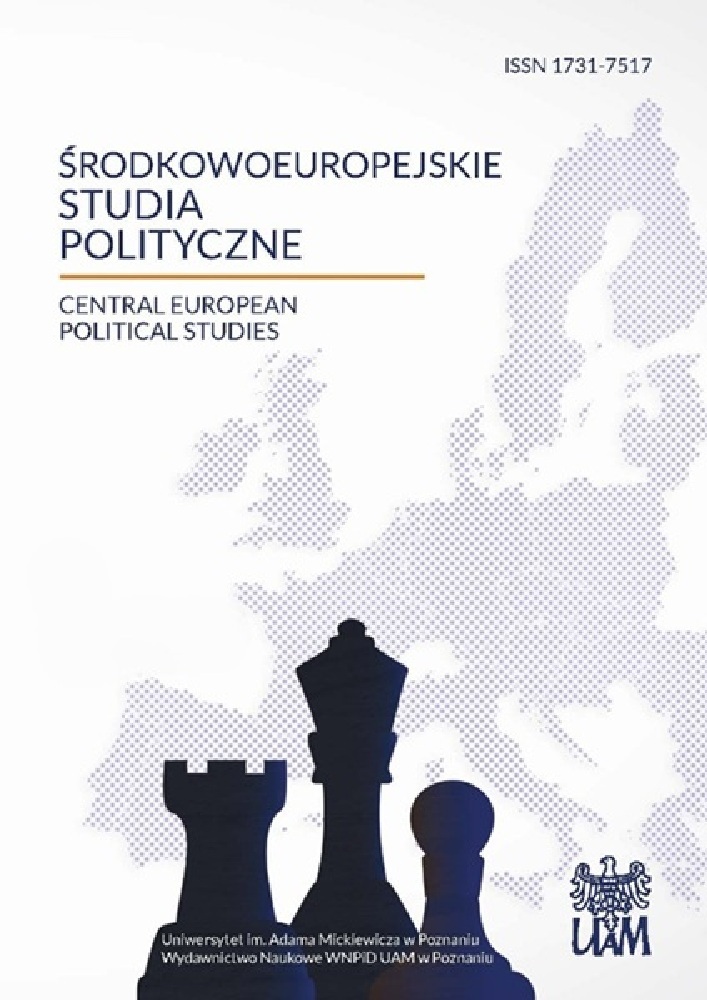Abstrakt
The aim of this paper is to present the findings of a quantitative content analysis of the Polish print media. Sharing the codebook and procedures with an international team, we were able to gain a broad perspective on the media coverage of the first Polish EU presidency. In particular, we focused on: (1) the number of items covering events related to the presidency, (2) the prominence of the topic, (3) genres, (4) main topics, (5) authors of news, (6) authors of opinions, and (7) the way Polish journalists evaluated Poland’s performance during the EU presidency. The findings showed that although Polish print press reported the first Polish EU presidency, the topic’s prominence was not very high. Media organizations rather rarely presented the topic on the front page and they did not change their regular editorial policy. Most of the news items, as well as opinions and comments, were written by staff members. Furthermore, journalists seemed to be more interested in the opinions of national politicians, rather than experts. As a result, the framework of the coverage was predominantly domestic. Journalists working for daily newspapers focused mostly on providing news and their own interpretations of the reported events. On the contrary, weekly magazines provided comments and interviews, but again, most of the opinions were expressed by their own journalists and editors.Bibliografia
Albrycht I., Węć J. (2011), Bilans prezydencji belgijskiej w Unii Europejskiej. Wnioski dla polskiej prezydencji [Summary of Belgian EU Presidency. Conclusions for Polish Presidency], Brief Programowy Instytutu Kościuszki.
Barcz J. (2011), Prezydencja w Radzie Unii Europejskiej [EU Council Presidency], Centrum Informacji Europejskiej.
Czachór Z., Tomaszyk M. (eds.) (2010), Przewodnictwo państwa w Radzie Unii Europejskiej – doświadczenia partnerów, propozycje dla Polski [EU Council Presidency – Partners’ Experience, Suggestions for Poland], Instytut Spraw Publicznych.
Fuksiewicz A., Szczepanik M. (2010), Parlament Europejski jako partner polskiej prezydencji [European Parliament as a Partner of Polish Presidency], “Analizy i Opinie”, no. 112, Instytut Spraw Publicznych.
Gromadzki G. (2010), Jaka Prezydencja? Uwagi po wejściu w życie traktatu lizbońskiego [What Kind of Presidency? Comments on The Lisbon Treaty], “Analizy i Opinie”, no. 109, Instytut Spraw Publicznych.
Grosse T. G. (2007), Euro 2011: Polska prezydencja w Unii Europejskiej [Euro2011: Polish EU Presidency], “Analizy i Opinie”, no. 77, Instytut Spraw Publicznych.
£ada A. (2011), The Polish Presidency – pushing the agenda and shaping the Lisbon system, Instytut Spraw Publicznych – Policy Brief.
Kolczyński M. (ed.) (2013), Obraz prezydencji Polski w Radzie Unii Europejskiej (2011) w wybranych tytułach prasy polskiej [The Image of the Polish EU Council Presidency (2011) in Selected Polish Press], Uniwersytet Śl¹ski, Katowice.
Riedel R. (ed.) (2010), Polska prezydencja w Unii Europejskiej 2011 [Polish EU Presidency 2011], Uniwersytet Opolski, Opole.
Iyengar S., Simon A. (1993), News Coverage of the Gulf Crisis and Public Opinion. A Study of Agenda-Setting, Priming, and Framing, “Communication Research”, vol. 20, no. 3, pp. 365–383.
Brewer P. R., Graf J.,Willnat L. (2003), Priming or Framing. Media Influences on Attitude on Foreign Countries, “International Communication Gazette”, vol. 65, no. 6, pp. 493–508.
Scheufele D. A., Tewksbury D. (2007), Framing, Agenda-Setting, and Priming: The Evolution of Three Media Effect Models, “Journal of Communication”, vol. 57, no. 1, pp. 9–20.
Weaver D. H. (2007), Thoughts on Agenda-Setting, Framing, and Priming, “Journal of Communication”, vol. 57, pp. 142–147.
Ociepka B. (1998), Komunikacyjny wymiar integracji i rozszerzenia Unii Europejskiej [The Communicative Dimension of EU Integration and Enlargement], in: Jaka Europa? [What kind of Europe?], ed. E. Stadtmüller, Wydawnictwo Atla 2, Wrocław.
Ociepka B. (2005), Populism as “good communication with people”. The Polish Case during the Referendum Campaign, in: Populism and Media Democracy, ed. B. Ociepka, Wydawnictwo Uniwersytetu Wrocławskiego, Wrocław.
Ociepka B. (2011), Foreign News in the Press. Summary of Research on the Coverage of European Events in Poland and Germany, in: News in Europe, Europe on News, ed. A. Stępińska, Logos Verlag, Berlin, pp. 99–114.
Świerczyński M. (2004), Polskie media w kampanii przed i po-referendalnej [Polish media in pre and post-referendum campaigns], in: Media a integracja europejska [Media and the European Integration], eds. T. Sasińska-Klas, A. Hess, Wydawnictwo Uniwersytetu Jagiellońskiego, Kraków.
Szymczyński T. R. (2011), The Challenge of the Conceptualizations in Journalism. On Myths and Facts Regarding the Media Coverage of the Europeanization and Globalization Processess, in: News in Europe, Europe on News, ed. A. Stępińska, Logos Verlag, Berlin, pp. 63–82.
Stępińska A. (2011), Obraz konfliktu rosyjsko-gruzińskiego w 2008 roku w polskiej prasie drukowanej [Polish press coverage of the Russian-Georgian conflict in 2008], “Zeszyty Prasoznawcze”, no. 1–2, pp. 59–75.
Licencja
Copyright
© 2013, Uniwersytet im. Adama Mickiewicza w Poznaniu, Wydawnictwo Naukowe Instytutu Nauk Politycznych i Dziennikarstwa
OPEN ACCESS
